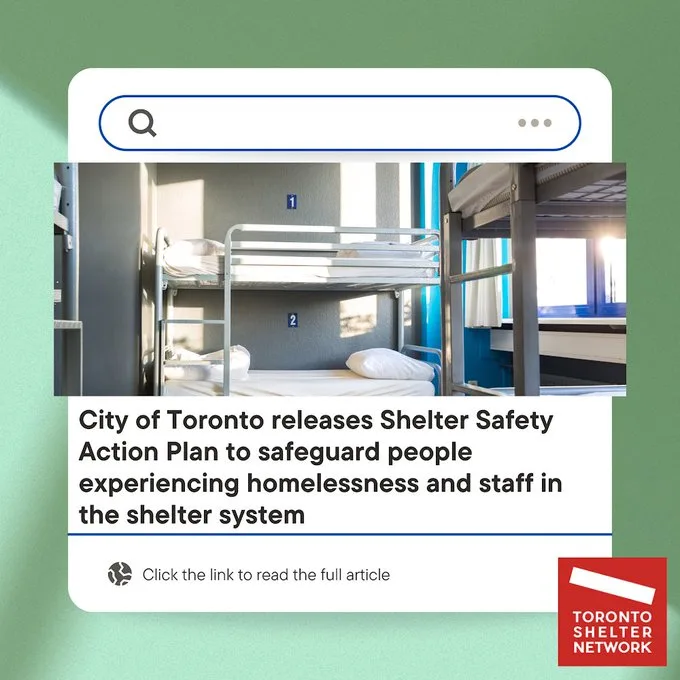Toronto – The City of Toronto is presenting a staff report to improve how those staying and working in the emergency shelter system are kept safe. The measures in the Shelter Safety Action Plan (SSAP) will help ensure staff are better protected, clients are safe and the shelter system is more resilient.
If adopted by the Economic and Community Development Committee on Tuesday, November 26 and at Toronto City Council in December, this plan will implement 14 actions over the next three years, delivering on the recommendations from the Shelter Safety Study which was commissioned by the City and conducted by the Centre for Addiction and Mental Health (CAMH). That study observed that the rate of incidents in the shelter system was similar to issues experienced in other service settings, showing the far-reaching impacts of the mental health crisis.
Safety is one of the most frequent concerns in the shelter system. Staff and clients deserve to be treated with respect, and violent, abusive or harassing behaviour is not tolerated. Factors that contribute to these behaviours are complex and the SSAP takes steps to address the root causes. The plan was developed in consultation with shelter providers, community stakeholders and people with lived experience of homelessness.
Steps in the Action Plan include:
- Continuing to establish measures that protect the physical and psychological well-being and safety of staff and clients, particularly to support Indigenous, Black, racialized and 2SLGBTQ+ individuals. This includes implementing new tools that will track and notify staff of incidents of anti-Black racism so that staff can enact safety plans and other interventions to help mitigate racism in the shelter system.
- Establishing enhanced supports for staff following serious occurrences.
- Reviewing and strengthening training for staff including additional training in targeted areas such as supporting clients who use methamphetamines.
- Working with partners to facilitate and expand access to health care, mental health supports, crisis intervention and enhanced harm reduction services.
- Identifying clients with high rates of incidents and service restrictions to ensure they are properly supported and connected to appropriate housing that meets their needs.
- Developing enhanced interventions such as specialized programs to support people with extensive histories of violence and service restrictions.
- Improving policy guidance for the shelter sector on the use and consistency of service restrictions.
- Clarifying the process for clients to access information on their service restrictions, as well as complaint resolution processes.
In addition to the SSAP, several actions have already been taken to ensure the safety of clients and staff including trauma-informed de-escalation training, implementing a risk alert system for clients with histories of behavioural issues and investments in mental health and harm reduction services.
Key actions taken to date:
- Implemented a strategy to support wellness, create a trauma-informed culture and improve operational process to support shelter staff.
- Implemented the Behavioural Risk Alert Safety System which denotes clients with histories of violent behaviour so that staff can undertake proactive safety planning.
- Deployed a Confronting Anti-Black Racism team to support staff in creating safer spaces for Black staff and clients in shelters.
- Augmented safety infrastructure in City-operated shelter sites to improve standards for threat evaluation, emergency response and risk mitigation including in new shelter sites built through the Homelessness Services Capital Infrastructure Strategy
(HSCIS).
- Facilitated access to health, mental health and harm reduction services across the system (such as in shelters, 24-hour respites, street outreach and drop-ins) so people can receive sustained access to health care services that are timely, equitable and meet the unique needs of each individual.
- Strengthened harm reduction supports in shelters in response to the drug toxicity crisis and in accordance with provincial guidance and legislation on harm reduction.
The Action Plan is available on the City’s website .
“Health and safety are paramount in shelter settings, where some of our most vulnerable residents are receiving help. The steps in the Shelter Safety Action Plan will allow for important strides forward in keeping staff and people experiencing homelessness safe.” – Mayor Olivia Chow








